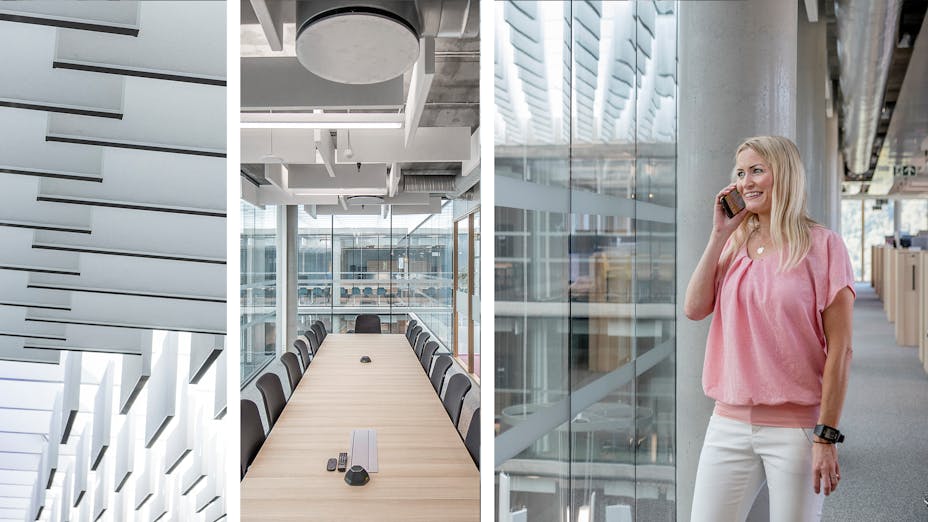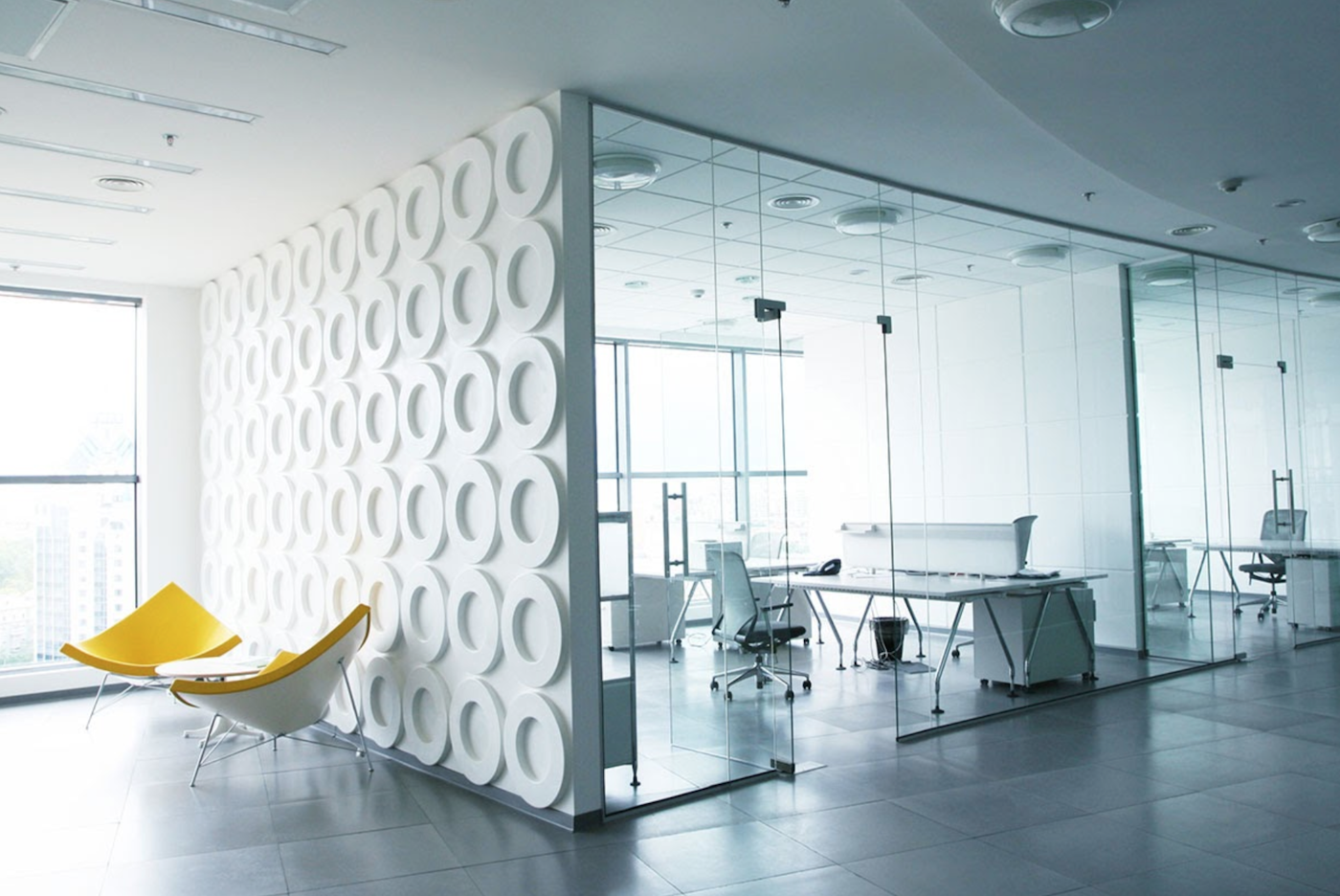In the modern era of sustainable design, sunlit glass offices have emerged as a promising solution for reducing environmental impact while enhancing occupant well-being.
Like a beacon of ecological progress, these eco-friendly workspaces harness the power of natural light to improve energy efficiency, productivity, and air quality.
By incorporating sustainable building materials and biophilic design principles, glass office partitions offer a harmonious connection to the outdoors, further promoting a sense of environmental stewardship.
This article explores the multifaceted benefits of sunlit glass offices, providing insights for those seeking mastery in eco-friendly workplace design.
Energy Efficiency
Energy efficiency is a notable advantage of sunlit glass offices. These offices can significantly reduce their reliance on artificial lighting harnessing natural sunlight, resulting in substantial energy savings. Sunlit glass offices utilize advanced glazing technologies that allow for optimal daylight penetration while minimizing heat transfer.
This reduces the need for electric lighting during daylight hours and decreases the cooling load on the HVAC system, further enhancing energy efficiency.
Natural Light and Productivity
Natural light in work environments has been linked to increased productivity. Natural light significantly impacts mood and can positively influence the circadian rhythm, which is the internal biological clock that regulates sleep and wakefulness.
Several studies have shown that exposure to natural light in the workplace can enhance mood and reduce stress levels, improving job satisfaction and overall well-being.
Additionally, natural light helps regulate the body’s melatonin production, which is crucial in sleep-wake cycles. Employees exposed to natural light during the day tend to have better quality and longer sleep at night, resulting in improved cognitive function and productivity.
To optimize productivity in the workplace, it is essential to prioritize the incorporation of natural light through the use of sunlit glass offices or strategically placed windows.
- Natural light enhances mood and reduces stress levels.
- Exposure to natural light improves job satisfaction and overall well-being.
- Natural light regulates melatonin production, improving sleep quality.
- Better sleep leads to improved cognitive function and productivity.
Reduced Carbon Footprint
Reduced carbon footprint can be achieved through the implementation of sustainable practices in the workplace. One of the key areas where businesses can make a significant impact is focusing on energy savings and reducing their environmental impact.
Sunlit glass offices offer a unique opportunity to harness natural light, reducing the need for artificial lighting and consequently saving energy.
To understand the potential energy savings and environmental impact of sunlit glass offices, consider the following table:
| Sustainable Practice | Energy Savings | Environmental Impact |
| Installing solar panels | Significant reduction in electricity consumption | Decreased reliance on fossil fuels |
| Efficient HVAC systems | Lower energy consumption for heating and cooling | Reduced greenhouse gas emissions |
| Use of daylight sensors | Optimal use of natural light, minimizing artificial lighting | Decreased energy consumption |
Improved Air Quality
Improved air quality can be achieved through the implementation of sustainable practices in the workplace. These practices not only promote a healthier work environment but also contribute to the overall well-being of employees.
Some of these practices include installing efficient HVAC systems and using daylight sensors to optimize natural light. Incorporating indoor plants and air purification systems further enhances air quality reducing pollutants and increasing oxygen levels.
To improve air quality in the workplace, the following measures can be taken:
- Install indoor plants: Indoor plants have the ability to remove toxins from the air and release oxygen, there improving air quality.
- Use air purification systems: Air purification systems effectively remove harmful particles, allergens, and pollutants from the air, ensuring cleaner and healthier indoor air.
- Implement proper ventilation: Proper ventilation systems help in circulating fresh air throughout the workspace, diluting indoor pollutants and maintaining a healthy indoor environment.
- Regular maintenance and cleaning: Regularly maintaining and cleaning HVAC systems, air filters, and ducts prevent the buildup of dust, allergens, and other contaminants, promoting better air quality.
Sustainable Building Materials
One approach to promoting sustainability in construction is through the use of environmentally conscious building materials. Eco-friendly materials, also known as green construction materials, are designed to minimize the negative impact on the environment while maximizing energy efficiency and resource conservation.
These materials are sourced from renewable resources, such as bamboo or cork, or are made from recycled materials, such as reclaimed wood or recycled steel. Additionally, eco-friendly materials often have low embodied energy, meaning that the energy required to produce, transport, and install them is minimal.
By incorporating these materials into construction projects, builders can reduce carbon emissions, decrease waste, and contribute to a more sustainable future.
Biophilic Design
Sustainable interiors play a crucial role in green architecture, and one key aspect of this is biophilic design. Biophilic design aims to reconnect people with nature incorporating natural elements into built environments. This design approach recognizes the innate human need for connection to nature and integrates it into the design of buildings and interiors.
Biophilic design principles include the use of natural materials, such as wood and stone, as well as the incorporation of natural light and views of nature. This approach has been shown to provide numerous benefits, including improved well-being, increased productivity, and reduced stress levels.
Benefits of Biophilic Design:
Biophilic design, inspired nature, brings numerous benefits to indoor spaces, enhancing well-being, productivity, and overall quality of life. By incorporating natural elements and patterns, such as plants, natural materials, and daylight, biophilic design connects to the natural world:
- Stress Reduction: Biophilic elements have a calming effect, reducing stress and anxiety. Exposure to nature-inspired settings, such as greenery and water features, promotes relaxation and mental rejuvenation.
- Enhanced Productivity: Incorporating biophilic design in workplaces boosts employee productivity and creativity. Natural light and views of nature have been linked to improved focus, problem-solving, and innovative thinking.
- Improved Air Quality: Live plants improve indoor air quality filtering pollutants and increasing oxygen levels. This promotes a healthier and more comfortable environment.
- Positive Impact on Mood: Biophilic elements elevate mood and well-being. Access to nature-like settings positively influences emotional states, fostering a more positive and harmonious atmosphere.
- Physical Health Benefits: Exposure to natural light and views has been associated with faster recovery times in healthcare settings. Incorporating biophilia can support patients’ physical healing and comfort.
- Connection to Nature: Biophilic design bridges the gap between urban environments and the natural world. It reconnects occupants with nature, even in bustling urban areas, fostering a sense of connection and grounding.
- Reduced Absenteeism: Biophilic design can reduce absenteeism in workplaces and schools promoting well-being and overall health.
Connection to the Outdoors
This discussion will focus on the advantages of natural light in the workplace, including its impact on increased employee well-being, productivity, and creativity.
Natural light has been shown to have numerous benefits, such as regulating circadian rhythms and improving mood, which can contribute to a healthier and happier workforce.
Additionally, exposure to natural light has been linked to enhanced cognitive function and problem-solving abilities, increasing employee productivity and creativity.
Natural Light Advantages
The advantages of natural light in sunlit glass offices include increased productivity, improved mood, and reduced energy costs.
Natural light has numerous health benefits, such as regulating the body’s circadian rhythm and boosting vitamin D production. It has been found that exposure to natural light can enhance cognitive function, concentration, and alertness, leading to higher productivity levels among employees.
Furthermore, natural light can positively impact mood and reduce stress levels, creating a more pleasant and enjoyable work environment.
In terms of sustainable design, incorporating natural light reduces the need for artificial lighting during the day, resulting in lower energy consumption and reduced carbon emissions. This benefits the environment and leads to substantial cost savings for businesses.
Increased Employee Well-Being,
Employee well-being can be achieved incorporating natural light in office spaces.
Research has shown that exposure to natural light has numerous health benefits for employees, improving employee satisfaction and overall well-being. Natural light has been found to regulate circadian rhythms, which play a crucial role in regulating sleep-wake cycles, mood, and cognitive function.
Employers can support their employees’ natural circadian rhythms providing ample natural light in office environments, increasing productivity and job satisfaction. Additionally, exposure to natural light has been linked to reduced eyestrain, headaches, and fatigue, further enhancing employee well-being.
Incorporating natural light in office design can be achieved through the use of large windows, skylights, or glass walls.
Productivity and Creativity Boost
Maximizing exposure to natural light in office spaces has enhanced employee productivity and creativity. Research suggests that incorporating sunlit glass offices into workplace design can provide several productivity benefits and create a more creative environment.
- Improved mood and well-being: Natural light has been linked to improved mood and reduced stress levels, positively impacting productivity and creativity.
- Increased alertness and focus: Exposure to natural light helps regulate circadian rhythms, leading to increased alertness and better concentration, ultimately improving productivity.
- Enhanced cognitive function: Natural light stimulates the brain and enhances cognitive function, including problem-solving and creative thinking abilities.
- Health and wellness benefits: Sunlit glass offices not only increase natural light exposure but also offer views of the outside world, which has been shown to reduce eyestrain, fatigue, and improve overall well-being.
Conclusion
The eco-friendly benefits of sunlit glass offices are extensive. Using natural light not only enhances productivity but also reduces the carbon footprint of the building.
Additionally, incorporating sustainable building materials and biophilic design further contributes to a more environmentally conscious workplace.
Moreover, improved air quality and the connection to the outdoors create a healthier and more enjoyable work environment.
By embracing these eco-friendly practices, businesses can positively impact the environment while promoting employee well-being and productivity.





